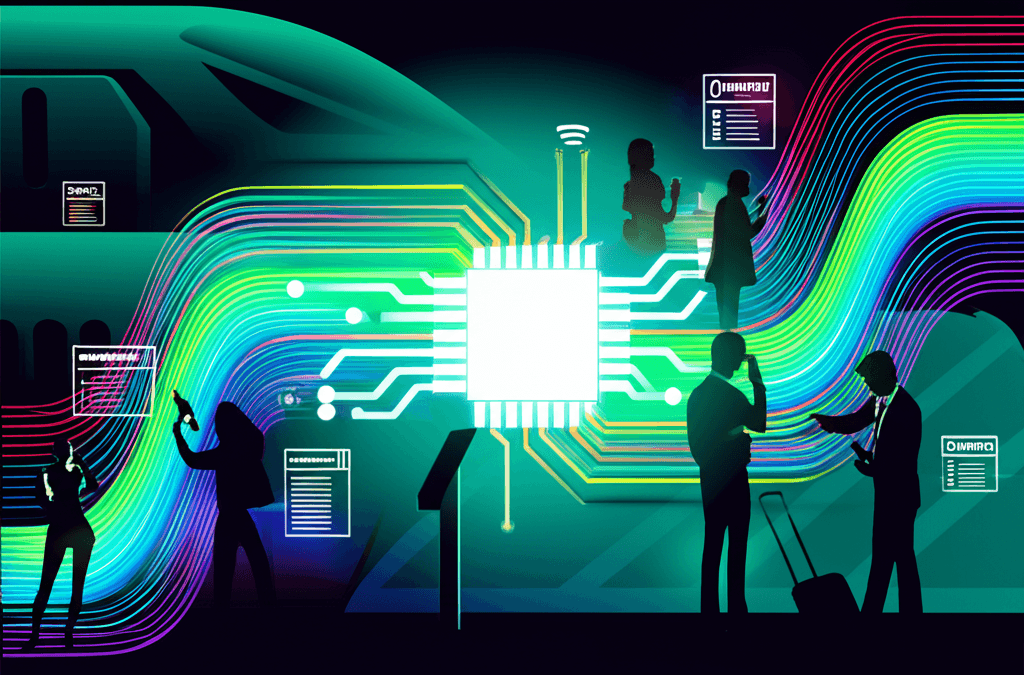AI to Break Language Barriers for Millions on Indian Railways
Bhashini's AI to bring Indian Railways services to millions in 22 languages, fostering inclusion and accessibility.
June 10, 2025

In a significant stride towards leveraging artificial intelligence for public services, the Digital India Bhashini Division (DIBD) and the Centre for Railway Information Systems (CRIS) have signed a Memorandum of Understanding (MoU) to develop and implement AI-powered multilingual solutions for Indian Railways. This collaboration aims to break down language barriers for millions of railway passengers by integrating Bhashini's advanced language technologies into various customer-facing platforms and services managed by CRIS.[1][2][3][4][5][6] The initiative is set to enhance accessibility, inclusivity, and user experience across the railway network, aligning with the broader goals of the Digital India mission.[2][4][5]
The partnership will see Bhashini, an initiative under the Ministry of Electronics and Information Technology (MeitY) as part of the National Language Translation Mission (NLTM), provide its cutting-edge language technology stack to CRIS.[2][3][7][8][9] This stack includes tools like Automatic Speech Recognition (ASR), Text-to-Text Translation (TTS), Text-to-Speech (TTS), and Optical Character Recognition (OCR).[1][2][3][5][6] CRIS, the IT backbone of Indian Railways, designs, develops, implements, and maintains most of the critical information systems for the railway network, including passenger ticketing, freight operations, and train dispatching.[10][11][12][13] The core objective of this MoU is to enable access to railway information and services in 22 scheduled Indian languages, thereby catering to the linguistic diversity of the nation's vast railway user base.[1][2][3][14][4][5] Key platforms like the National Train Enquiry System (NTES) and RailMadad, which handle passenger inquiries and grievances respectively, are slated for this multilingual upgrade.[1][2][3][5][6]
The collaboration will focus on several key areas to transform the passenger experience.[2][14][5] A primary goal is the co-development of multilingual chatbots and voice assistants that can provide real-time support to passengers for queries, bookings, and grievance redressal in their native languages.[1][2][3][4][5][6] This extends to creating multilingual interfaces for over-the-counter enquiry systems at railway stations.[1][2][3] Furthermore, the Bhashini-powered services will be deployed across various digital touchpoints including railway websites, mobile applications, station kiosks, and even call centers.[1][2][3][4][5] This comprehensive rollout aims to facilitate seamless, real-time, speech-based interactions in multiple Indian languages, significantly improving how passengers engage with railway services.[2][3][14][4][5] The deployment strategy will utilize both cloud-based and on-premise infrastructure to ensure wide accessibility and scalability of these AI-driven language solutions.[1][2][14] To operationalize the partnership, a series of joint technical workshops and pilot deployments are expected to commence in the near future.[1][2][14][5][6]
The implications of this Bhashini-CRIS partnership extend beyond immediate passenger convenience, signaling a major boost for the AI industry in India, particularly in the domain of natural language processing (NLP) for Indian languages. Bhashini's mission is to build a national public digital platform for languages, enabling all Indians to access digital services and content in their own language.[15][7][8][9] By integrating with a large-scale public utility like Indian Railways, Bhashini will gain access to vast amounts of real-world data and use cases, which are crucial for refining its AI models and enhancing their accuracy and contextual understanding for diverse Indian languages.[16][17] This project serves as a significant government-led adoption of AI for public service delivery, potentially encouraging further investment and development in Indic language AI technologies by startups and research institutions.[18][19][9] The initiative also showcases a practical application of AI to solve genuine societal challenges like linguistic barriers, thereby promoting digital inclusion and equitable access to essential services.[7][20][9][21][22] The success of this collaboration could set a precedent for other government departments and public sector undertakings to adopt similar AI-powered language solutions, further strengthening India's capabilities and leadership in language AI on a global scale.[1][4][20]
In conclusion, the MoU between Bhashini and CRIS marks a pivotal moment in the application of AI to enhance public infrastructure in India. By committing to provide railway services in 22 Indian languages, the initiative promises to make rail travel more accessible and user-friendly for a significant portion of the population that may not be proficient in English or Hindi.[1][2][5] This not only improves passenger experience but also champions digital literacy and inclusion.[7][9] For the AI industry, this large-scale deployment offers a fertile ground for innovation and the development of more sophisticated language models tailored to the complexities of Indian languages.[16][17][23] As the project moves from agreement to execution, it will be closely watched as a model for leveraging technology to bridge linguistic divides and create a more equitable digital ecosystem in line with the Digital India vision.[1][2][4][5]
Sources
[2]
[6]
[7]
[9]
[10]
[11]
[14]
[16]
[17]
[18]
[19]
[20]
[21]
[22]
[23]